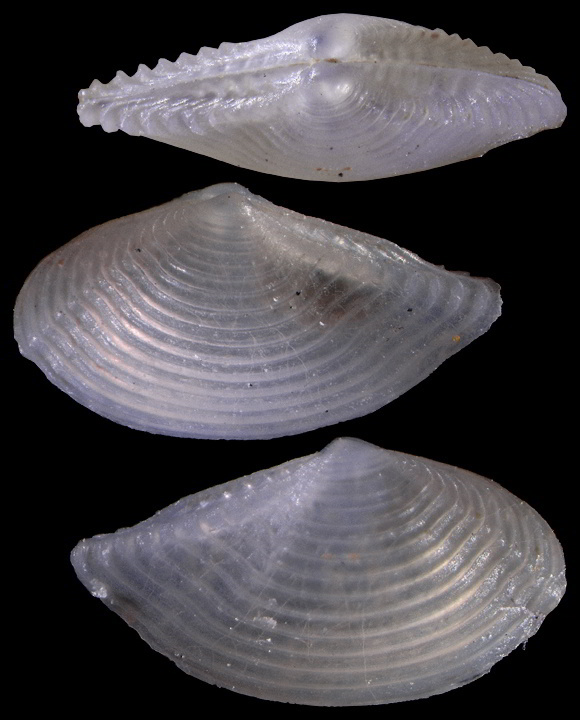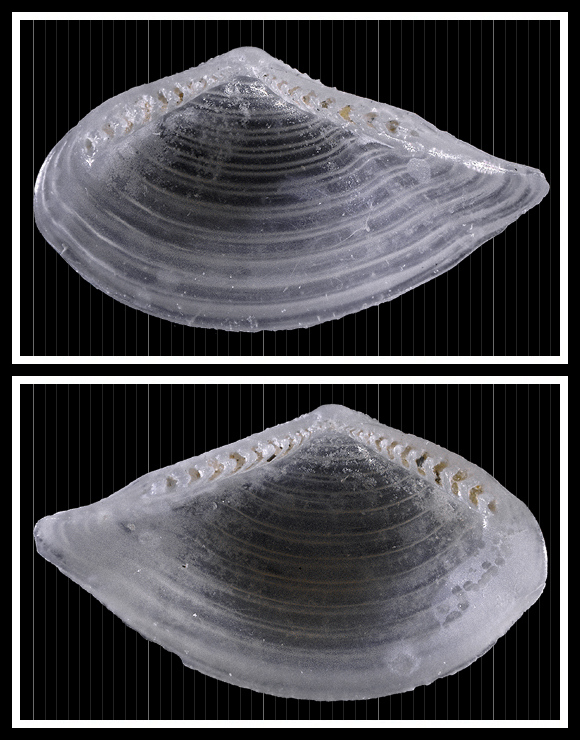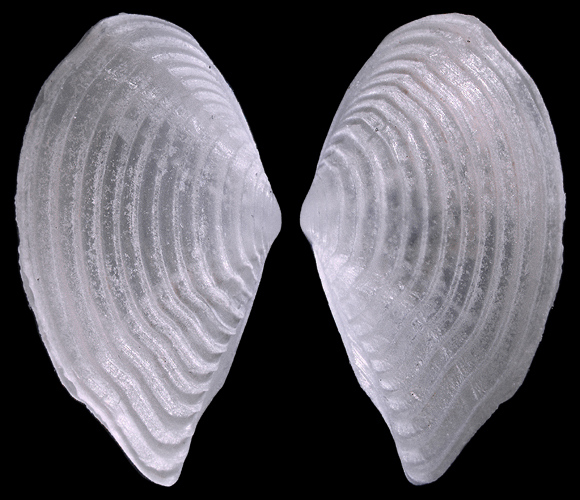
The name refers to the ancient name of the country, Illyria, a kingdom founded along the eastern coast of Adriatic.
« Some time ago, the Ruđer Bošković Institute, Centre for Marine Research of Rovinj, Istra, Jugoslavia, kindly sent me for inspection some shell grit samples collected during the dredging campaigns of the ship “Vila Velebita” from August 1973 to August 1974 along the northern part of the Dalmatian coast from Zadar to Rijeka. The average depth of the dredgings ranged from about 60 to about 100 metres. […] The relatively flat and clearly rostrate shell is provided with widely spaced concentric furrows. The umbo is situated slightly anterior of the middle. There is an inconspicuous lunule and a relatively narrow and flat escutcheon. » – F. Carrozza: “A new marine bivalve species from the Mediterranean: Nuculana illirica sp. nov.” Basteria 51 (4-6).
80m deep, in muddy sand, Saronic Gulf, Greece. 3,6mm.

« The hinge has 20-22 posterior and 19-21 anterior teeth. […] N. illirica is most similar to N. commutata, which differs, however, by shells which are: relatively broader (7-8mm long, 3mm high and 5mm broad); less rostrate; provided with about twice as many concentric furrows; provided with 15-16 teeth in both parts of the hinge, and provided with a more prominent lunule and escutcheon. » – Ibid.
According to the number of teeth mentioned by Carroza, the specimen above, which shows about 15-16 teeth on both sides, may be a juvenile commutata and not an illirica. 80m deep, hvarski kanal, Split-Dalmatia Comitat, S. Croatia. 4,5mm. These valves are common in the channel.
According to the number of teeth mentioned by Carroza, the specimen above, which shows about 15-16 teeth on both sides, may be a juvenile commutata and not an illirica. 80m deep, hvarski kanal, Split-Dalmatia Comitat, S. Croatia. 4,5mm. These valves are common in the channel.

The shape, in small specimens, is often very rostrated in both species. Also, you will notice that even Carrozza shows, p.160, a hinge with a smaller number of teeth than expected p.159. So, at this time, it seems that the only distinctive reliable feature must be, when comparing shells of a similar size, the number of concentric folds, or lamellae, of the outside of the valves: lower in illirica than in commutata. Same spot. 3,7mm.